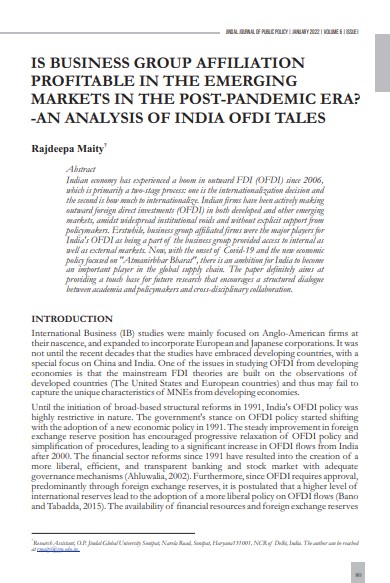Is business group affiliation profitable in the emerging markets in the post-pandemic era? :
an analysis of India OFDI tales
DOI:
https://doi.org/10.54945/jjpp.v6i1.154Abstract
Indian economy has experienced a boom in outward FDI (OFDI) since 2006, which is primarily a two-stage process: one is the internationalization decision and the second is how much to internationalize. Indian firms have been actively making outward foreign direct investments (OFDI) in both developed and other emerging markets, amidst widespread institutional voids and without explicit support from policymakers. Erstwhile, business group affiliated firms were the major players for India's OFDI as being a part of the business group provided access to internal as well as external markets. Now, with the onset of Covid-19 and the new economic policy focused on "Atmanirbhar Bharat", there is an ambition for India to become an important player in the global supply chain. The paper definitely aims at providing a touch base for future research that encourages a structured dialogue between academia and policymakers and cross-disciplinary collaboration.







